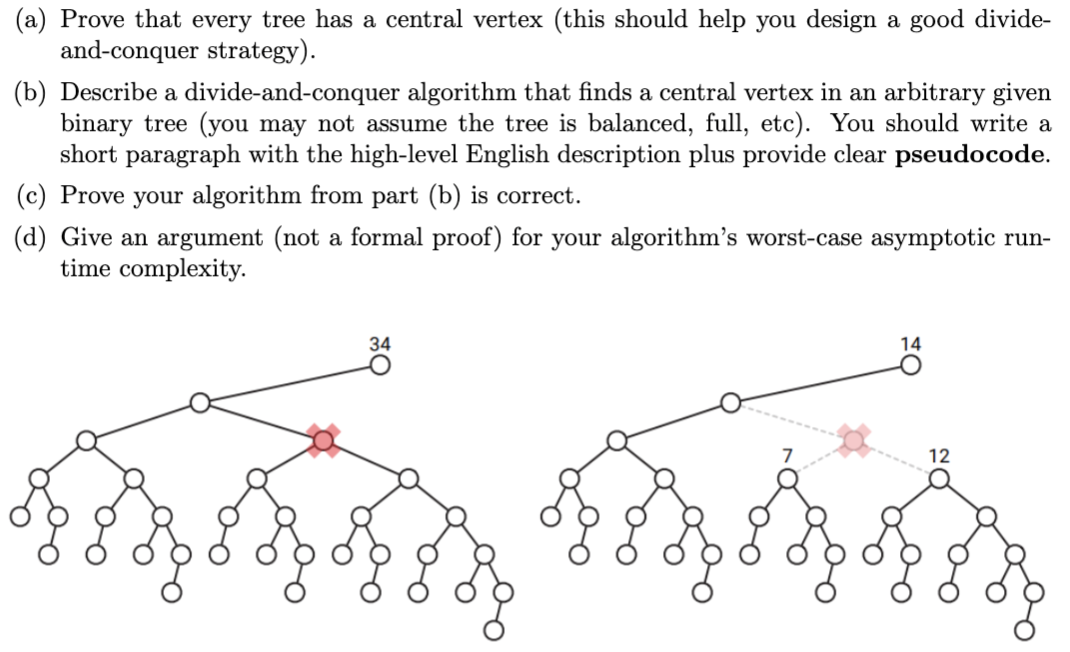Answered step by step
Verified Expert Solution
Question
1 Approved Answer
Let T be a binary tree with n vertices. Deleting any vertex v splits T into at most three subtrees, containing the left child of
Let T be a binary tree with n vertices. Deleting any vertex v splits T into at most three subtrees, containing the left child of v(if any), the right child of v(if any), and the parent of v(if any). We call v a central vertex if each of these smaller trees has at most n/2 vertices. See the figure below for an example
Step by Step Solution
There are 3 Steps involved in it
Step: 1

Get Instant Access to Expert-Tailored Solutions
See step-by-step solutions with expert insights and AI powered tools for academic success
Step: 2

Step: 3

Ace Your Homework with AI
Get the answers you need in no time with our AI-driven, step-by-step assistance
Get Started


